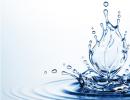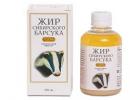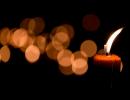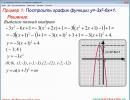How to photograph drops on glass. photography lesson
My passion for photography began relatively recently, since 2012, when for my next birthday I was presented with a Nikon D7000 with an 18-105 lens. I did not let go of the camera for a long time, read the instructions, then read them again ... I shot everything: portraits, landscapes, animals, like all beginners. After some time, I realized that macro photography attracts me most of all, and more specifically, "banal" drops of water. At first glance, they seem simple, but you need a lot of patience and imagination to take them off beautifully. This is what I decided to do...
I shot my first drops using a punctured plastic bag, but only columns of water and crowns were obtained, but I wanted to get a beautiful drop with an open umbrella. I read a bunch of articles on the Internet on the topic “how to shoot water drops” and one day, on one site, I came across an article about high-speed triggers with which you can control drops. My choice fell on the trigger of the Cognisys company, which has been manufacturing such equipment for a very long time, I must say that the equipment is not cheap.
A little about the advantage of this device. Using a trigger, you will have full control over the drops, but don't be fooled that the trigger will do everything for you, it's not. By connecting from 1 to 12 valves at the same time, you can create compositions from drops, and using multi-colored liquids you will get water sculptures of different colors. With the dropper stand, you will get even more opportunities for your creativity, because the stand allows you to control the height of the drops, the ability to install flashes and fix backgrounds directly on the stand itself.
Below I will describe a method that will allow you to photograph the "crowns" without expensive equipment. This, of course, does not mean that you will succeed the first time. Stock up on patience and the desire to get a beautiful picture. Believe me, the result will be worth it. By experimenting with different variations of applying drops to the surface, you will get interesting pictures every time. Each drop, each crown is unique. They never repeat. The resulting interesting pictures can be printed and hung on the wall. It will not be a shame to give such pictures to friends as an original work of art.
So, for shooting we need
- Black plexiglass (plexiglass can be replaced with a black plastic background or regular glass with black cloth or paper). The mirror is not suitable for this, because. reflection will double.
- At least one flash with a reflector (as a reflector, you can use ordinary food foil, a mirror, etc...). I use at least 4 YN560 flashes.
- Cream 10% and acrylic paints (any paint will do for a start).
- Wet cloth, because after each collision, you need to wipe the surface.
- Syringe (10 ml) for applying drops to the surface (if you want to get multi-colored crowns, you will need several syringes with different colors of paints).
- A needle and thread (we will tie it to a dropper in order to understand exactly where the drop will fall).
- Remote control or assistant
- Medical dropper (you need to remove the needle with plastic from it).
- Mug or glass.
Liquid preparation
As a liquid, I suggest using physical. solution. After it is over, you can pour ordinary water or milk into the dropper. We measure out 5-7 ml of cream with a syringe and mix them with paints. I love making saturated colors.


Applying a drop to a surface and focusing
We take our needle and thread, tie it to the tip of the dropper, wait until the needle stops swinging and indicates the place of application of the first drop, we also focus on the needle. We apply a drop to the acrylic surface.



Dropper setting
If you use a medical dropper, the water will drip continuously. To get a crown, you only need one drop, so the dripper must be adjusted so that one, maximum two drops drip. This is where the mug comes in handy to catch the first drop. Immediately after that, get ready to catch the moment of the second drop and keep the cable release at the ready.
Camera setup
We select the mode M / F16 / ISO 100, and the shutter speed is 1/125 1/320. Your settings may differ from mine.
Disable autofocus and stabilizer (if any).
Flash setting
I'm using four YN560 flashes, pulse 1/32 1/64, flash zoom 105 equals focal length (experiment with light). If you have one flash, place it on the side, and put a reflector on the other side. Try to position the flashes as close to the subject as possible. Remember that the closer the flash is to the subject, the smaller the 1/128 flash, but this may not be enough to light the entire scene. You may need to find the right distance and momentum by trial and error.

To learn how to photograph water drops and splashes, you need to know a few basic principles. Firstly, unlike waterfalls and rivers, photographing drops will require a photographer to be patient, since only one of dozens of photographs will be successful. This type of shooting requires a quick reaction, so to photograph water drops, it is better to set the camera to continuous shooting mode.
Secondly, in order for the drops not to turn out blurry, the camera needs to stop the movement. This will require a fast shutter speed, from 1/1000 to 1/2000. Another condition is not quite small, that is, a value of at least f / 5.
The third condition follows from the previous one: take pictures of the water, you will need either a powerful light source, or a large light sensitivity, and possibly both at the same time.
Fourthly, to create a beautiful background, you need colored paper, colored plastic or another surface, and for water - a transparent bowl. Using these simple items, you can get beautiful drops.
Finally, to avoid glare on the water surface, it is better to point the light source at a colored background, and not at the bowl itself.
Step-by-step instruction:
Step 1. Prepare the shooting location. For example, it is mounted on a tripod on the left, and a 1000 W video lamp (it is mounted on the right) is used for lighting. The light is directed to a colored background. In fairness, it must be said that this example is used only to demonstrate the general installation. To beautifully illuminate the drops, it is better to place the light source on the back side of the bowl.

Step 2 Prepare a bowl of water, as well as a source from which water will drip. It can be:
- A) pipette
- B) a regular plastic bag with a small hole in the corner: water will drip through it (one of the best options)
- B) faucet
- D) a bottle with a sports neck (for this example, such a bottle was used)
Step 3 Mount the camera on a tripod. You will need a macro lens, but if you do not have one, you can use a Soviet one with macro rings (for example, Jupiter 37A and a set of macro rings, it is very inexpensive, and the quality is excellent). If you have a soap dish, set it to macro mode. But remember that with its help it will not be easy to get high-quality pictures. Of the soap dishes for such shooting, compacts are best suited, for example, the Canon Powershot G9.
Step 4 Set the shooting parameters, keeping in mind that the shutter speed should be fast. For this example, shooting parameters 1/1250, f/6.3, ISO 500 were used.

Step 5 Set the camera to focus mode M (manual focus mode). Focus on a test stream or any object lowered into the bowl. Remember that when focusing manually, the place where the drops fall must match. Take a few test shots to make sure the drops are sharp.
Step 6 Take pictures! The main secret of success is in the number of photos and your dexterity. Nevertheless, even in such unpredictable plots, the ideology of the sniper works. The more attentive the photographer, the better the photos will turn out. Thoughtless shooting in the "machine gun" mode may not lead to the desired results.

Experiment with camera position and light. In addition, to achieve interesting results, you can:
- A) change the background (even indoor plants can be used as a background)
- B) change the height from which the drops fall (the higher the bottle, the more drops)
- C) tint the water that drips from the bottle: the water in the bowl will be transparent, and the water in the bottle will be colored, which will create an interesting effect.
- D) change the direction of light: at different angles of incidence of light rays, water looks different. Drops look best when they are illuminated with back-side light.
- E) change the shooting point: note that in the example above the camera is located almost at the level of the drop, and in the example of step 4 the drop is filmed from above.

20685 We improve our skills 0
Do you like photos when a drop, breaking on the surface of the water, creates bizarre splashes? Do you want to learn how to take beautiful pictures of them? Then this little tutorial is for you!
First of all, for such photography you need to know a few basic principles. Firstly, unlike, for photographing drops, the photographer will need remarkable patience, since one of dozens of photographs will be successful. The rejection rate is very high. This type of shooting requires a quick reaction, so to photograph water drops, the camera must be set to continuous shooting mode.
Secondly, in order for the drops not to turn out blurry, the camera needs to stop the movement. This will require a fast shutter speed, on the order of 1/500 - 1/1000. Another condition is not quite a shallow depth of field, that is, an aperture value of at least f / 5.6.
The third condition follows from the previous one - in order to photograph water, you will need either a powerful light source, or a high sensitivity to light, and possibly both at the same time.
Fourthly, to create a beautiful background, you need colored paper, colored plastic or another surface, and for water - a transparent container. Using these simple items, you can get beautiful drops.
Finally, to avoid glare on the water surface, it is better to point the light source at a colored background, and not at the water container itself.
Equipment
So, the list of necessary equipment includes: a camera with manual control, a tripod, an external flash, a remote control, a water tank, a plastic bag and a colored background, which we just mentioned.
Even if you only have a whale lens at hand, you should not despair. No experiment here. Although the camera is fixed on a tripod, it is possible to move it, so it is better to use the remote control when shooting.
Step by Step Guide to Photographing Water Droplets
Step 1. Prepare the shooting location. For example, the camera is mounted on a tripod on the left, and a 1000 W video lamp (it is mounted on the right) is used for lighting. The light is directed to a colored background. In fairness, it must be said that this example is used only to demonstrate the general installation. To beautifully illuminate the drops, it is better to place the light source on the back-side of the container. The flash is usually mounted on the side of the falling drops. However, if you put it in front of the background, you can get beautiful reflections on the water, depending on the color of the background. You can also illuminate objects without using a background, but you need to direct an additional light source in front of the lens.

Step 2. Prepare a container of water, as well as a source from which water will drip. It can be:
a) pipette
b) an ordinary plastic bag, in the corner of which a small hole has been made: water will drip through it (one of the best options)
c) crane
d) a bottle with a sports neck (for this example, such a bottle was used)
The liquid source should be fixed so that the drops fall in one place. This is necessary so that it is not necessary to re-focus the camera on the point where the water falls each time.
Step 3. Mount the camera on a tripod. You will need a macro lens, but if you do not have one, you can use a Soviet lens with the ability to manually set the required aperture with macro rings (for example, Jupiter 37A and a set of macro rings, it is very inexpensive, and the quality is excellent). If you have a soap dish, set it to macro mode. But remember that with its help it will not be easy to get high-quality pictures. Of the soap dishes for such shooting, compacts with manual exposure settings are best suited.
Step 4. Set the shooting parameters, keeping in mind that the shutter speed should be fast. For this example, shooting parameters 1/1250, f/6.3, ISO 500 were used.

Step 5. Set the camera to focus mode M (manual focus mode). Focus on a test stream or any object lowered into the bowl. Remember that when focusing manually, the place where the drops fall must match. Take a few test shots to make sure the drops are sharp.
Step 6. Take pictures! The main secret of success is in the number of photos and your dexterity and skill. Nevertheless, even in such unpredictable plots, the ideology of the sniper works. The more attentive the photographer, the better the photos will turn out. Thoughtless shooting in the "machine gun" mode may not lead to the desired results.

How to photograph splashes
If you like working with water, then the next question may be how to photograph the splashes, since when using a bag of liquid, you will not be able to organize enough of them. In this case, you can make several small pieces of foil and throw them into the water during the shooting. They can organize splashes of various sizes. Also, if you do not want to use a bag of liquid, you can draw some water into a regular cocktail tube and release it. But with this design, large drops will drip down. In order to adjust their size, you can use pipettes.

Another feature when shooting drops is a picture of the so-called "crown". This effect is only obtained by throwing large enough objects into the water, such as a nut or bolt. Depending on the shape of the object, various objects can be obtained. However, fixing the "crown" is far from the first time. In 100 shots, only one can be successful.
And one more tip - experiment! And with the position of the camera, and with the light. In addition, to achieve interesting results, you can:
1) change the background (even indoor plants can be used as a background)
2) change the height from which the drops fall (the higher the bottle, the more drops)
3) tint the water that drips from the bottle: the water in the container will be transparent, and the water in the bottle will be colored, which will create an interesting effect.
4) change the direction of light: at different angles of incidence of light rays, water looks different. Drops look best when they are illuminated with back-side light.
5) change the shooting point: note that in the example above, the camera is located almost at the level of the drop, and in the example of step 4, the drop is filmed from above.

On this, in principle, and all. :) All you photographic and good shots!
You will need
- - a camera with very fast shutter speeds, starting from 1/2000 and less;
- - lens for macro photography;
- - an external flash that can work at short shutter speeds;
- - tripod;
- - a vessel with water;
- - napkins;
- - a straw;
- - White background.
Instruction
Place a bowl of water on the surface of your choice. Making large drops is convenient with a straw. You can lightly submerge it in water, then cover the hole with your finger, remove the straw from the water, and then open the hole. A large beautiful drop will fall from its end. You can automate the process by hanging something over the vessel, from where the drops will fall. Use an upside down bottle with a slightly unscrewed one, or you can use a plastic bag with a very small opening.
Fix the source of drops over the bowl so that the water always falls in the same place. This is important because you can focus once and not care about it again. A straw is useful for focusing. Place it in the place where the drops fall and focus.
For a more accurate definition of sharpness, use one trick. Take a piece or chewing gum and put it on the bottom, under the place on the surface where the drops drip. Place a pin or carnation on it so that its end sticks out of the water. This way you will be able to sharpen the image with the utmost precision. Do not use autofocus, the settings will give the most accurate result.
Place a white background behind the vessel. Lighting can be done in two ways: point the flash at a vessel with water or put a light source behind the background, pointing it towards the camera, so you get backlight. For best results, try different options. If the plate of water is glass, then set the light from below - you will get unusual results.
Experiment with water drops. You can get interesting splashes if you throw objects into the water. A foil ball is well suited for these purposes. Due to the complex surface, it gives a large amount of spatter.
Use continuous shooting. A drop of water falls so fast that the human eye does not have time to capture some moments, and it is quite difficult to catch the right frame even out of habit. Turn off any settings that prevent the camera from shooting quickly. Usually this is noise reduction, stabilization and autofocus. With continuous shooting, you will notice in what sequence and how a drop of water falls and merges with the surface. Over time, after some practice, you will learn to capture moments and press the shutter button in time and without continuous shooting.
In this article, I will tell you how the photo that you see to the left of the text was taken.
In fact, there is nothing complicated.
I don't have my own studio, special backgrounds and lighting fixtures.
Everything you need for splash photography, this is a SLR camera, a tripod and an external flash with manual control mode.
Everything else is improvised materials.

So let's make a list of the props I used in this shoot:
- a Canon 450D SLR camera and a lens with manual focus adjustment (I have a Canon 50 mm f1.8);
- tripod for the camera;
- external flash (I have a Canon 580 EX);
- radio trigger for external flash control (optional), I use Yongnuo RF-602TX;
- 12 liters aquarium (any one will do, depending on the size of the subject);
- Bulgarian pepper from a nearby supermarket (the most beautiful);
- a box from under the Wacoom graphics tablet (black from the inside) as a background;
- a microfiber cloth to quickly remove splashes from the background and walls of the aquarium;
- plastic bags to protect equipment from splashes.
First, prepare the surface of the table where you will install the aquarium. I used thick cardboard as a bedding under the aquarium to protect the countertop from water splash. At the same time, white cardboard served as a light reflector from the bottom of the aquarium, which created the effect of illumination from below.
 Now fill the aquarium about halfway with water and place it on a table, not too far from the wall. Place the background on the back. I recommend shoot water splashes on a dark background (black, dark blue, dark green), because the bright reflections on the water drops contrast perfectly with the dark background.
Now fill the aquarium about halfway with water and place it on a table, not too far from the wall. Place the background on the back. I recommend shoot water splashes on a dark background (black, dark blue, dark green), because the bright reflections on the water drops contrast perfectly with the dark background.
I used a black box. To secure it vertically, I simply taped it to the wall. Make sure that the tape does not get into the frame, otherwise it will glare and spoil the background.
Now we put the camera on a tripod and adjust the height so that the entire frame is occupied by the aquarium. It is better to immediately frame larger and remove unnecessary details (walls, table). If you are using a kit lens, set it to 50-55mm. I used a lens with a fixed focal length of 50 mm, f/1.8. It gives excellent sharpness.
 It is best to shoot water splashes in such conditions with lenses with a focal length of 50-70 mm. A sufficiently long focal length will avoid distortion of proportions, but the WTO will allow you to put the camera close enough to the subject so that you can press the shutter button yourself. To shoot with a telephoto lens, you need to purchase a remote shutter release (wired or wireless).
It is best to shoot water splashes in such conditions with lenses with a focal length of 50-70 mm. A sufficiently long focal length will avoid distortion of proportions, but the WTO will allow you to put the camera close enough to the subject so that you can press the shutter button yourself. To shoot with a telephoto lens, you need to purchase a remote shutter release (wired or wireless).
 So, we composed the frame the way we like. Leveled the height of the tripod, fixed the camera. Now switch to manual shooting mode and set the exposure parameters: aperture f=11, shutter speed 1/160, iso 200.
So, we composed the frame the way we like. Leveled the height of the tripod, fixed the camera. Now switch to manual shooting mode and set the exposure parameters: aperture f=11, shutter speed 1/160, iso 200.

 Place the flash in the direction opposite to the light from the window. So that its impulse falls both under and above the water level. Set the flash to manual mode and set the minimum power value (1/64 or 1/128). This will help create a short burst of light that will freeze the water splashes in the photo. If you do not have a synchronizer, switch the external flash to slave flash mode to synchronize with a light pulse from your camera's built-in flash.
Place the flash in the direction opposite to the light from the window. So that its impulse falls both under and above the water level. Set the flash to manual mode and set the minimum power value (1/64 or 1/128). This will help create a short burst of light that will freeze the water splashes in the photo. If you do not have a synchronizer, switch the external flash to slave flash mode to synchronize with a light pulse from your camera's built-in flash.
 Be sure to protect your flash from water by wrapping it in a clear plastic bag.
Be sure to protect your flash from water by wrapping it in a clear plastic bag.
Now position your subject (in my case, a bell pepper) on the surface of the water in the center of the frame. In autofocus mode, focus on the pepper by pressing the shutter button halfway. You can also take a test frame. After that, switch the lens to manual focus mode and do not rearrange anything.
So, we are all set. Try taking a test shot to evaluate the exposure. Adjust the exposure settings to get normal lighting in the picture. Don't set your shutter speed faster than what you need for flash sync (in my case, 1/160) and don't open your aperture faster than f=11 to get harsh spray.
 Now stand on the side of the camera so as not to block the flash. Lift the pepper above the water and release it into the water so that you get a splash. At the moment of throwing with the other hand, press the shutter button on the camera. Evaluate the result and adjust the position of the flash, the intensity of splashes, framing. Adjust the composition of the frame if necessary. Remember to focus every time you change the distance to your subject!
Now stand on the side of the camera so as not to block the flash. Lift the pepper above the water and release it into the water so that you get a splash. At the moment of throwing with the other hand, press the shutter button on the camera. Evaluate the result and adjust the position of the flash, the intensity of splashes, framing. Adjust the composition of the frame if necessary. Remember to focus every time you change the distance to your subject!
Now keep shooting until you get the desired result!

Good pictures for you!
See also great water splash freezing video tutorial with two external flashes:
And another video tutorial about so, how to photograph water splashes without flash:






